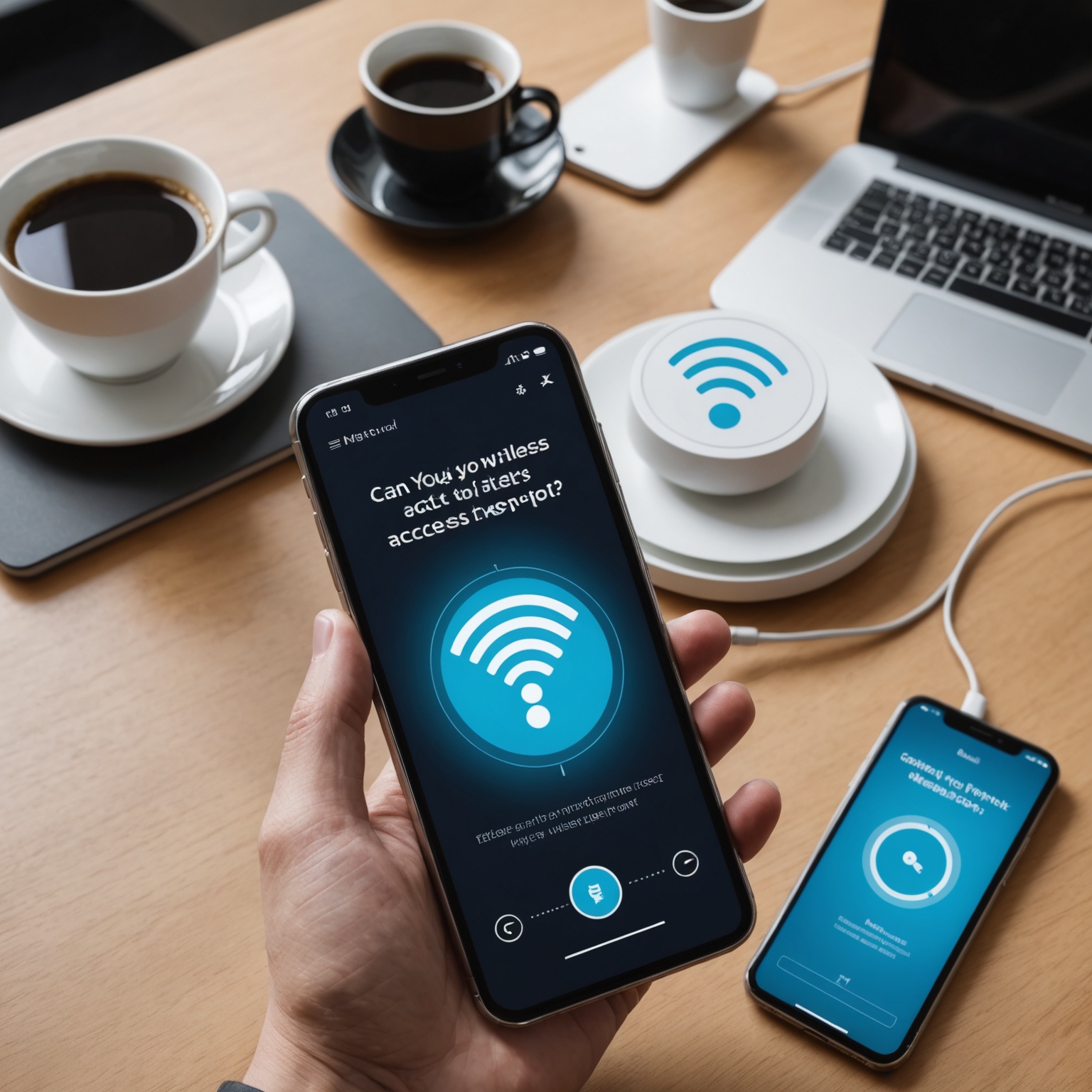Can You Configure Your Smartphone to Act as a Wireless Access Point for IoT Devices?

In today's interconnected world, having the ability to swiftly access the internet and share data amongst various devices is paramount. Imagine a scenario where your primary internet access is unavailable, or you find yourself in a location without Wi-Fi. In such cases, you might wonder if your smartphone can step up and act as a wireless access point for your IoT devices. Let's explore how you can transform your smartphone into a functional access point and the security implications of such a setup.
The Rise of IoT: Connecting Your Smart Devices
With the rapid proliferation of Internet of Things (IoT) devices, households and businesses alike rely heavily on smart devices to enhance efficiency and convenience. These devices, which range from smart thermostats and security cameras to connected refrigerators, significantly improve our daily routines by providing data and control at our fingertips. However, for these smart devices to function optimally, they must be connected to a robust and stable internet connection.
A découvrir également : What Are the Methods to Use Your Smartphone as a Digital Whiteboard for Collaboration?
Your mobile phone can serve as an excellent alternative, especially when you need a quick and temporary solution for connecting your IoT devices. By configuring your smartphone as a wireless access point (APN), you can provide your IoT devices with the necessary internet access to operate seamlessly.
Setting Up Your Smartphone as a Wireless Access Point
To turn your phone into a Wi-Fi hotspot, you need to follow a few straightforward steps. This process, known as tethering, allows your smartphone to share its mobile data connection with other devices. Here’s how to do it:
Cela peut vous intéresser : How to Set Up a Virtual Reality Headset Using Your Smartphone for Immersive Experiences?
Step-by-Step Guide
- Enable Mobile Data: Ensure your mobile data is active. This is crucial as your phone will use this data to provide internet access to your IoT devices.
- Access Settings: Navigate to the settings menu on your smartphone.
- Turn on Hotspot: Look for the 'Mobile Hotspot' or 'Tethering' option and switch it on. You might need to configure it by setting a network name (SSID) and a secure password.
- Connect Your Devices: Once the hotspot is active, your IoT devices, such as security cameras or smart lights, can connect to this network using the SSID and password you provided.
By following these steps, you effectively create a Wi-Fi access point using your smartphone, allowing your connected devices to access the internet through your mobile data.
Security Concerns: Safeguarding Your Network
While using your smartphone as an access point offers convenience, it’s crucial to consider the security implications. Security of your network is paramount, especially when dealing with IoT devices that often have varying levels of built-in security. Here are some measures to ensure your setup remains secure:
- Use Strong Passwords: Always use a strong, unique password for your Wi-Fi hotspot to prevent unauthorized access.
- Enable WPA3 Encryption: If available, opt for WPA3 encryption, which offers enhanced security compared to older WPA2.
- Disable Upon Completion: Turn off the hotspot when not in use to minimize exposure.
- Monitor Connected Devices: Regularly check which devices are connected to your network and ensure they are all recognized and authorized.
- Firmware Updates: Ensure both your smartphone and IoT devices regularly receive firmware updates to patch any security vulnerabilities.
By taking these steps, you can mitigate potential risks and ensure that your network remains secure while using your smartphone as an access point.
Practical Applications: When and Why to Use Your Smartphone as an Access Point
Using your smartphone as a wireless access point offers several practical advantages, particularly in situations where traditional Wi-Fi access is unavailable. Here are a few scenarios where this can be beneficial:
- Travel: When traveling, reliable Wi-Fi can be hard to come by. Turning your phone into a hotspot allows you to keep your devices connected, ensuring you can manage essential tasks such as home security or remote monitoring.
- Emergencies: In case of an internet outage at home or the office, your smartphone can act as a backup to keep critical IoT devices online.
- Temporary Setups: For events, exhibitions, or temporary installations where setting up a full router-based network is impractical, your smartphone provides an easy alternative.
These examples illustrate how versatile your smartphone can be in providing internet access to multiple devices without the need for permanent infrastructure.
In conclusion, configuring your smartphone to act as a wireless access point is a practical and efficient solution for providing internet access to your IoT devices. Whether for travel, emergencies, or temporary setups, your phone can serve as a reliable fallback to keep your network of smart devices operational. However, always remember to prioritize security by using strong passwords, enabling encryption, and monitoring connected devices.
By leveraging your smartphone’s capability to create a Wi-Fi hotspot, you ensure that your IoT devices remain connected to the internet, providing the convenience and control you rely on. With these steps, you can confidently use your smartphone to bridge the gap and maintain seamless connectivity for your smart devices.
